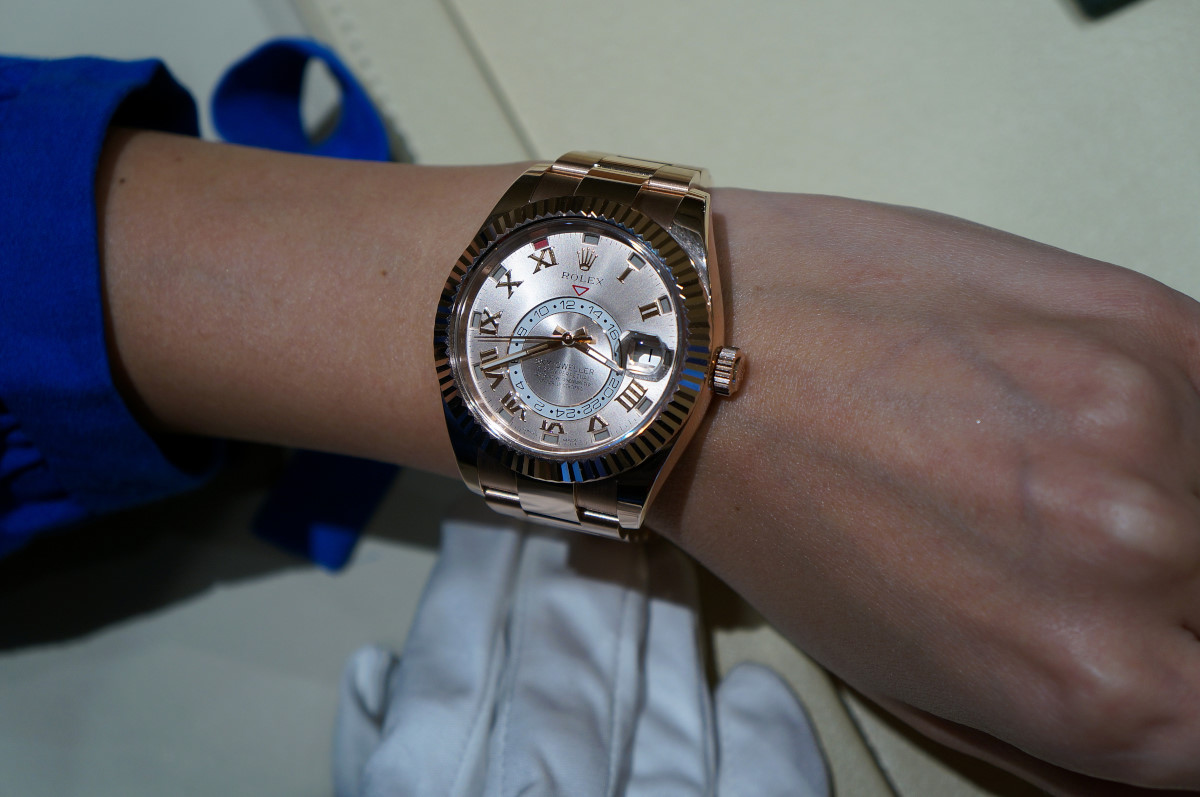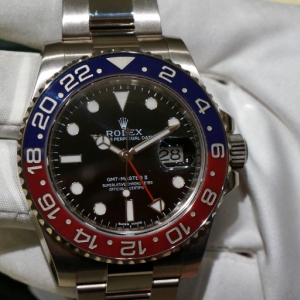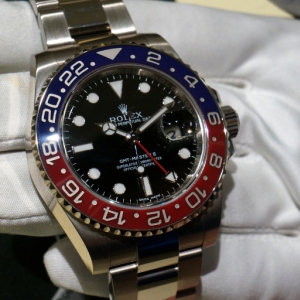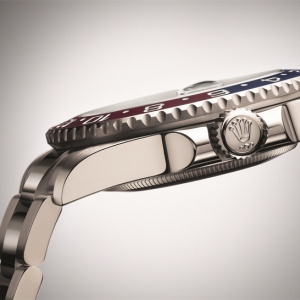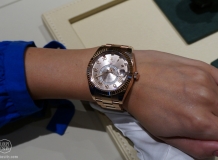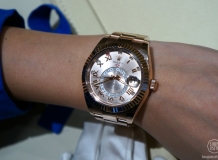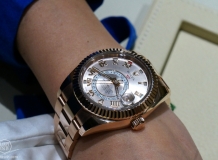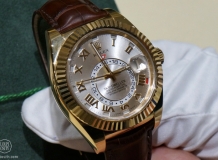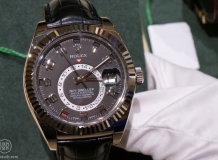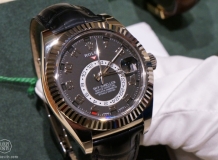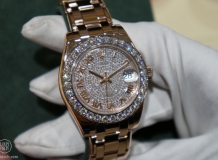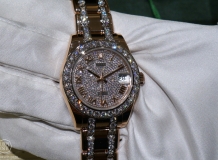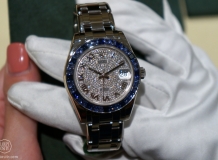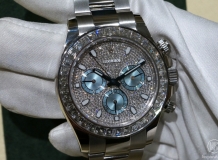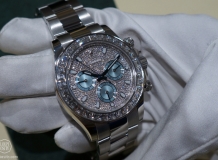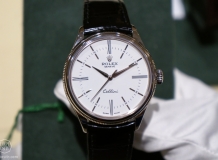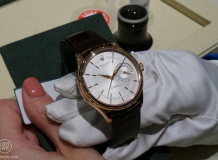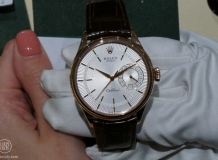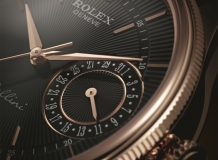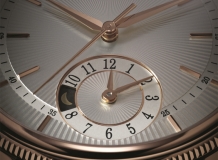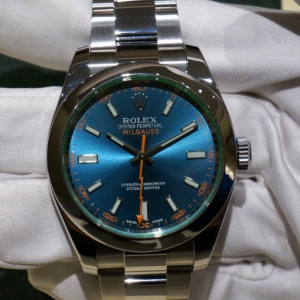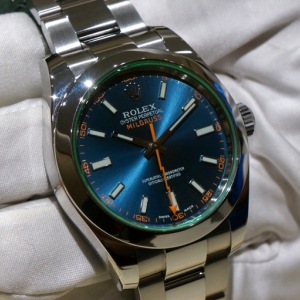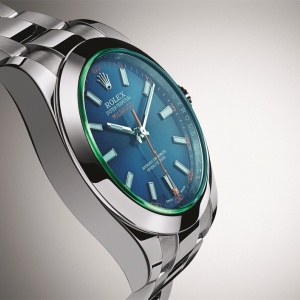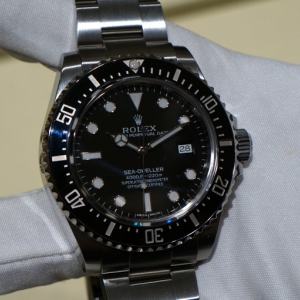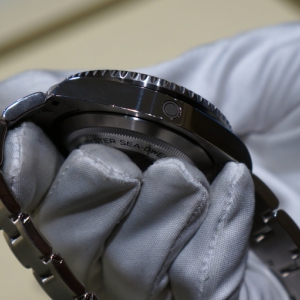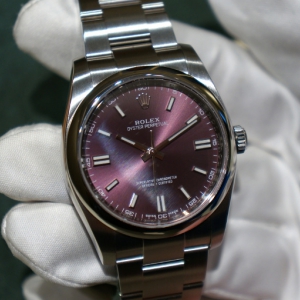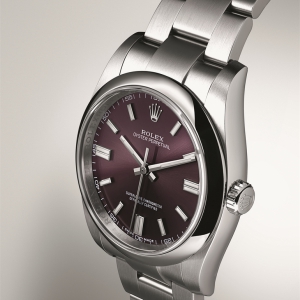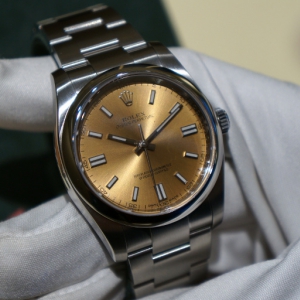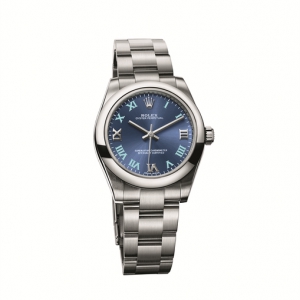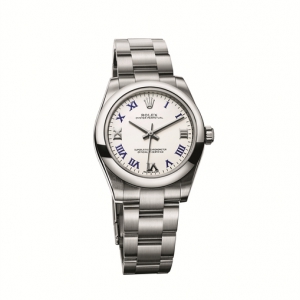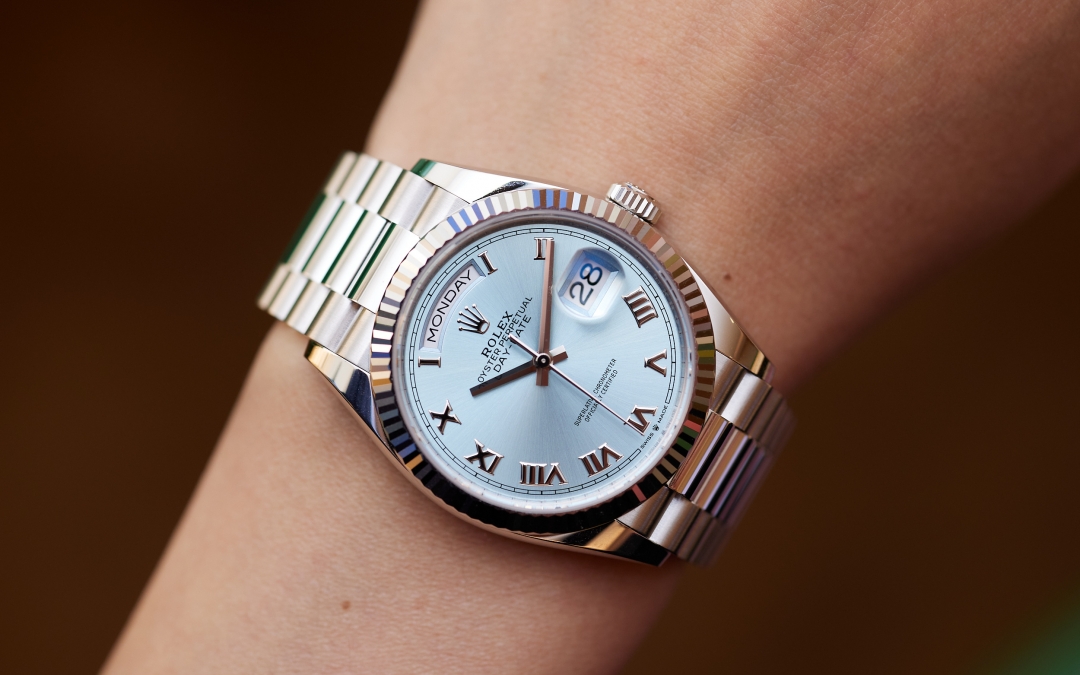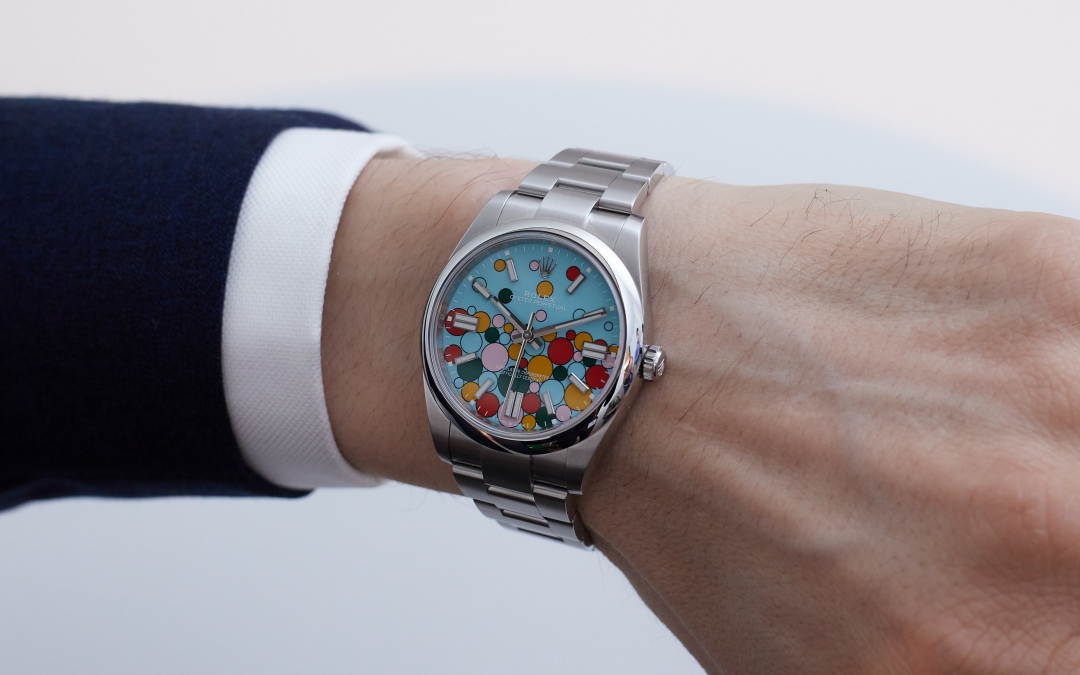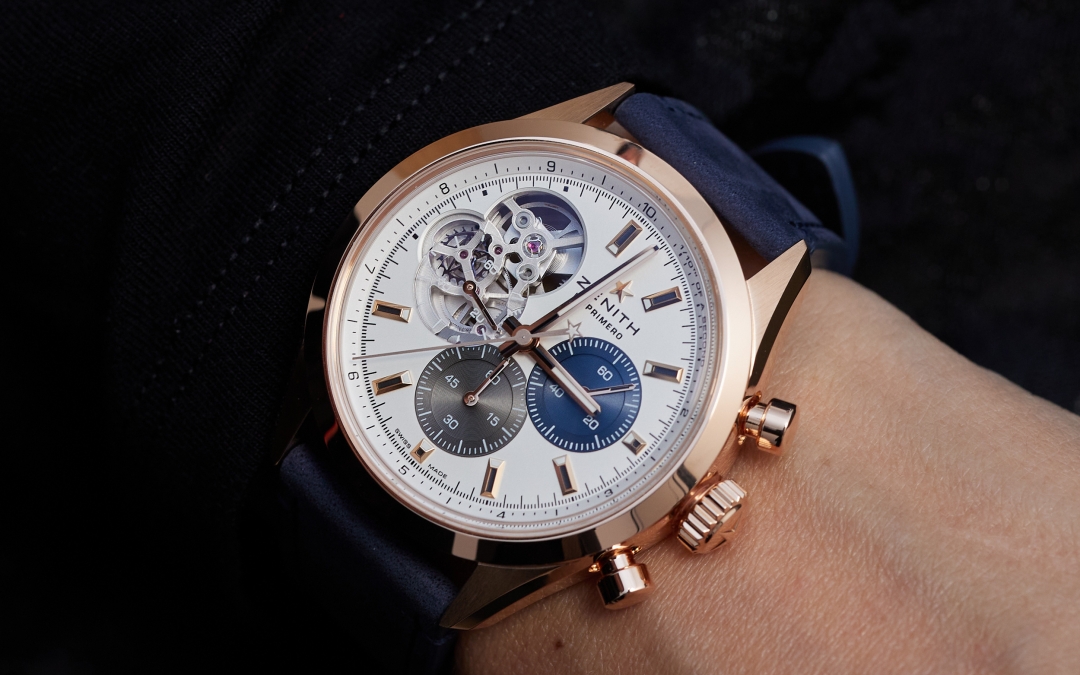Rolex has once again showcased a wide range of models as well as innovations in 2014.
Rolex Oyster Perpetual GMT-Master II
As a woman let me start with a colour, namely the red on the Cerachrom bezel of the white gold Oyster Perpetual GMT-Master II. Cerachrom is ceramic component that yields quite a resistant and nice surface, which was first used in 2005 in black. After long years of development the colour blue emerged and in 2013 the GMT-Master received a two-colour bezel (black and blue). In the case of ceramic the range of colours is somewhat restricted as mineral pigments are required in their production. These pigments can “fall apart” at high temperatures and can change colour. Red is typically such a colour thus Rolex has developed an in-house technology for producing it, and immediately employed it on the blue-red two-colour bezel of the Oyster Perpetual GMT-Master II (nicknamed as Pepsi). The timepiece houses a COSC (Contrôle Officiel Suisse des Chronomètres) certified Calibre 3186 perpetual movement, with bi-directional self-winding.
Rolex Oyster Perpetual Sky-Dweller
The Oyster Perpetual Sky-Dweller is a rather new model of the brand; it was first introduced in 2012. The watch with the dominant fluted bezel and the off-centred dial is available only in precious metals, such as 18K yellow gold, white gold and Everose gold. The dual time zone and annual calendar functions are delivered by the Calibre 9001 self-winding mechanical movement. Both in design as well as usage and ergonomics, the creators of the model focused on simplicity and comfort.
Even in ancient times the so-called Saros-cycle was known and used to calculate solar eclipses. The system of the Sky-Dweller Saros is a mini planetarium: it is centred on a main wheel (the Sun), which is linked to a small satellite gear (the Earth) that is driven by the date disc. The small gear rotates the main wheel completely once a month. The Earth wheel has a cam (the Moon) with four additional fingers that represent the four 30-day months (April, June, September, November), which makes the date to jump two days at the end of these months.
Just like the previous Sky-Dwellers the rotatable Ring Command bezel serves as a function setting interface: by turning it to the appropriate position you can set the time in the two time-zones and the date with the crown.
Diamond Oysters
The Oyster Perpetual Cosmograph Daytona and the Oyster Perpetual Datejust Pearlmaster 34 serve to showcase the expertise of the Rolex gem-setting masters; diamonds cover the dial, the bezel or in some cases even the bracelet links. Various setting techniques were used on various areas of the watch, for example the so-called the “channel setting” on the bezel, the “bead setting” on the case, or the dial. Every gemstone passes through strict inspection at Rolex’s own gemology laboratory before they can be used in a watch. Ladies can choose from models adorned entirely with diamonds, diamonds and dark/light blue sapphire and diamonds with pink sapphire in two tones in the Datejust Pearlmaster 34 models. The dial of the Oyster Perpetual Cosmograph Daytona is made of 950 platinum, and apart from the 3 ice blue sub-dials, it is fully paved with diamonds including the bezel with 36 baguettes. This watch will definitely not be the choice of a reserved Swiss businessman but the execution is truly stunning…
Rolex Cellini
Benvenuto Cellini was an Italian goldsmith, sculptor and musician, who not only inspired an opera, but a Rolex collection too. The new, elegant Cellini collection has 3 main lines – Time, Date and Dual Time. Cellini Time is a refined watch with a lacquer dial and Roman numerals in the four directions of the compass. The Cellini Date and the Dual Time have guilloche dials, and they are available in white or Everose gold with alligator leather strap. The latter also has a day and night indicator in addition to the second time zone at 6 o’clock.
Rolex Oyster Perpetual Milgauss
The Rolex Oyster Perpetual Milgauss is a wristwatch model introduced by Rolex in 1956. Thanks to its antimagnetic quality, it is designed primarily for those who work in a place where the magnetic environment was detrimental to watches (for example the CERN labs). The Milgauss is rather popular among Rolex fanatics and collectors because relatively few pieces have been sold. This year, the Milgauss „funky” version was issued, featuring green sapphire glass, Z blue dial, orange lightning-bolt-shaped seconds hand and white gold hour markers.
Rolex Oyster Perpetual Sea-Dweller 4000
The Rolex Oyster Perpetual Sea-Dweller Submariner 2000 was developed for industrial divers in 1967. The contemporary version of this model was just issued, and the Oyster Perpetual Sea-Dweller 4000 will most likely have an audience who use this watch in less grim circumstances. The stainless steel compound watch received a Cerachrom bezel and Chromalight luminescence on the markers. The Calibre 3135 is equipped with the antimagnetic Parachrom hairspring, which is also greatly shock-resistant and bears temperature variations better. The Sea-Dweller 4000 has received the helium escape valve that ensures that the gas is released from the watch during the decompression phases, thus decreasing the interior pressure.
Oyster Perpetual
Last year the Oyster Perpetual Day-Date received dials in unique colours, this year this fell on the Oyster Perpetual models that are now available in so-called white grape, red grape and steel sunray finished dial. Two summer mood versions are also among the novelties: one has a white lacquer dial with blue and white gold numerals, the other has an azzurro blue sunray finished dial with light blue and white gold Roman numerals.
Photo credits: Rolex, Loupiosity.com.
All registered trademarks are property of their respective owners.
All rights reserved.
